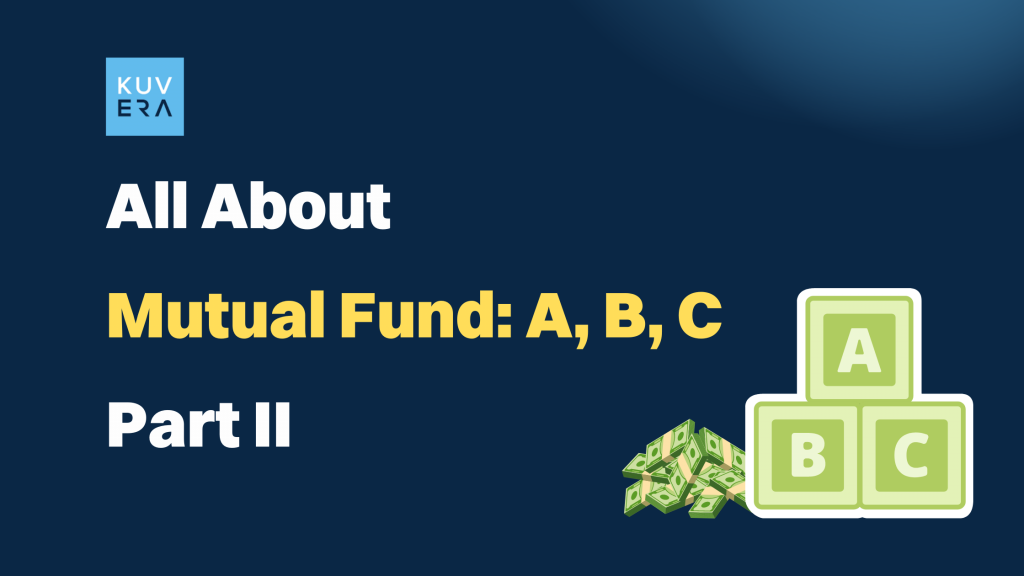Mutual funds are a popular investment vehicle that offers individuals an opportunity to participate in diverse financial markets. In this comprehensive guide, we will explore key terms and concepts related to mutual funds, spanning from A to Z.
In our previous blog we covered mutual fund basics from A to O, here we will cover from P to Z. Let’s start:
P – Portfolio:
A portfolio refers to the collection of investments held by a mutual fund. It includes stocks, bonds, cash equivalents, and other assets, carefully chosen to meet the fund’s investment objectives and strategy.
Q – Qualified Dividends:
Qualified dividends are a type of dividend income that is subject to lower tax rates. Mutual funds that hold eligible dividend-paying stocks can pass on these qualified dividends to their investors.
R – Risk:
Risk is the potential for loss or volatility associated with investing in mutual funds. Different mutual funds carry varying levels of risk depending on their investment strategies, asset allocation, and market conditions. It is important for investors to assess their risk tolerance before investing.
S – SIP (Systematic Investment Plan):
SIP is a method of investing in mutual funds where investors regularly invest a fixed amount at predetermined intervals. This disciplined approach helps investors inculcate a savings habit and benefit from the rupee-cost averaging effect.
T – Turnover Ratio:
The turnover ratio indicates how frequently the securities in a mutual fund’s portfolio are bought and sold. A high turnover ratio suggests active trading and can lead to higher transaction costs and potential tax implications.
U – Underlying Holdings:
The underlying holdings of a mutual fund are the individual securities, such as stocks or bonds, that constitute the fund’s portfolio. Investors can review the fund’s prospectus or fact sheet to gain insight into its underlying holdings.
V – Volatility:
Volatility refers to the degree of price fluctuations in a mutual fund’s value. Funds with higher volatility tend to experience larger price swings, indicating potentially higher risks but also the possibility of higher returns.
W – Withdrawal:
Withdrawal refers to the process of redeeming mutual fund shares and receiving the proceeds from the investment. Investors may choose to make partial or complete withdrawals from their mutual fund investments as needed.
X – Ex-Dividend Date:
The ex-dividend date is the cutoff date set by mutual funds to determine which investors are eligible to receive upcoming dividend payments. Investors who purchase mutual fund shares before this date are entitled to receive dividends, while those who buy shares on or after the ex-dividend date will not receive the current dividend payment.
Y – Yield:
Yield represents the income generated by a mutual fund, typically from dividends, interest payments, or capital gains, relative to its investment amount. It provides insight into the fund’s income-generating potential.
Z – Zero-Coupon Bond:
A zero-coupon bond is a type of fixed-income security that does not pay regular interest. Instead, it is issued at a discount to its face value and matures at par value, providing investors with a lump sum payment at maturity. Some mutual funds may invest in zero-coupon bonds to generate returns.
Conclusion:
From understanding asset allocation to navigating the complexities of portfolio management, this A-to-Z guide has covered key terms and concepts related to mutual funds. Armed with this knowledge, investors can make more informed
Interested in how we think about the markets?
Read more: Zen And The Art Of Investing
Watch here: Investing in focussed mutual funds
Start investing through a platform that brings goal planning and investing to your fingertips. Visit kuvera.in to discover Direct Plans and Fixed Deposits and start investing today.

